
Recent Blog Posts
September 8, 2012
Interview with Fitness Marketing Expert Jon Goodman
Here is an interview I did with Jonathan Goodman. For those who don’t know, Jon is a rising star in the field of fitness marketing. In particular, he has an expertise in the use of social media as a publicity tool. Jon also is the founder of the Personal Training Development Center, an excellent resource on all aspects of career-building for personal trainers. And he’s also affiliated with Girls Gone Strong, a popular site for female strength training.
Quick story: Jon approached me a couple years back about getting involved with the site. I politely declined, stating that I really didn’t have the time given my other commitments. Jon didn’t take ‘no’ for an answer. A couple month’s later, I was doing a book signing at a fitness conference in Toronto and Jon appeared at the event to speak to me about it in person. Through his persistance and communication that the endeavor wouldn’t require much of my time, I ultimately agreed to his request. Ever since, I’ve been consistently impressed with the content he puts out and his mission to enhance the quality of those in the field. I think the information he discusses here in this interview should be of interest to everyone, as basis of these principles apply to all fields. Enjoy!
You recently left your job as a successful personal trainer. What motivated your decision and what are you currently doing?
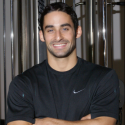
It was a hard decision and I already miss it. Unfortunately I found that I wasn’t giving my clients enough attention. My focus was on my various web ventures. I feel that I can reach more people by scaling my efforts than working one on one. It wasn’t fair to continue charging my clients a premium so I stepped aside. I’m lucky in that I worked at a gym with an amazing training team knowing that my clients are all looked after.
I have a couple major projects on the go:
-
1) The PTDC (Personal Trainer Development Center) is growing faster than ever. We are putting together some smallish manuals right now and have another seminar happening in Toronto on October 6/7th. It’s shaping up to be a great event and I’m excited for it.
2) MightyTrainer took a bit of a hiatus. We launched the comic with a lot of buzz but it quickly died off as the strips weren’t good enough. Teiko and I have revamped them and are releasing comics now that are better then ever. The crux is that we take all of the silly things that happen in the fitness world and blow them so far out of proportion that everybody laughs.
3) Girls Gone Strong has just launched their website. I’ve been working with them behind the scenes for a couple months and am really excited to see the movement take off. They’re the brains behind the operation but I am acting as a manager and social media guy.
4) I have just started to write my 3rd book. “Ignite the Fire: The Secrets to Building a Successful Personal Training Career” and “Race to the Top: How to Take Over the Social Media Feed” have been huge successes. The topic of the next one is still a secret but it gets deep into research concerning social contagion and viral theory.
5) Beyond that I blog a couple times a week on my personal site, jonathangoodman.ca. That’s where I talk about social media and marketing.
I read your new book, “Race to the Top.” Great job. You pack a lot of info into a very easy read. How did you research the information for the book?
The research was ¾ observational and ¼ theoretical. As sad as it sounds I sat at home for hours each day and watched social media feeds. Whenever anything gained traction in the feed I took meticulous notes concerning:
-
• Who shared it?
• What the post is about?
• How is the title written?
• What time of day is it?
• Why did I think the post was successful
• And a myriad of other points…
From this I was able to see patterns and built my own theory as to why people share. I then searched for empirical evidence to back my claims up and found that experiments were backing up what I had observed almost to a tee. Nobody had published it yet in an easily digestible book.
Once I recognized the opportunity to be first I blacked out. I took time off of training, shut off my phone, called my girlfriend and parents to tell them I’m out of commission, and shut off social media. I sat in a coffee shop for a week and a half 14hrs a day and wrote with my notes beside me. The end result is better than I would have ever expected.
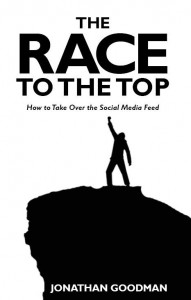
In your book, you state that search engine optimization is becoming obsolete. Can you expand on the reason(s) for this?
To clarify I don’t believe SEO is becoming obsolete. What I do believe is that most people who set out to make a name for themselves on the internet shouldn’t concern themselves with it. I relate a user who finds a site on a search engine to carpenter ants. You don’t know they are there, they hollow you out from the inside, and leave. These people won’t stick around for long and usually won’t buy anything.
If I sold a targeted product or worked in a neighbourhood gym search engine optimization could be useful. Most bloggers don’t have a chance to rank in a search engine. It takes years and lots of back links to take over even minor keywords these days.
As a result I recommend that people work on scaling referrals to their website. I speak of a couple different strategies in Race to the Top. Perhaps the most powerful is to look beyond the influencers and try to find the sharers. There are select people in every niche that like to share material. If you know what to look for they are easy to find. These are the people who build the roads in an industry and you’d do well to get them on your side.
I notice a very different writing style from most books I read. Can you tell us why you chose it?
Hahahaha. I chose it because I can’t stand reading non-fiction books. They take 10x longer to read than they should. I wanted to cut out the fluff. I value my readers time and wanted to make every word count.
I also wanted to stay true to the title and make the book a race from start to finish. There are no breaks. Each section flows into the next and it’s meant to be read in one long sitting. The feedback on the reading style has been awesome. It seems to have been a breath of fresh air from the stiffness of many non-fiction publications. Something that only a self-published author can do.
What are 3 major takeaways one can take from the book?
1. The feed is everything. Learn how to manipulate it and you will never have trouble selling your service or product ever again.
2. Facebook “likes” and twitter followers don’t matter. They are easy to buy. The purpose of gaining an audience is to sell your stuff. Don’t believe that more is better. Many of the pages you believe are popular have fabricated their fans to inflate their numbers.
3. If you’re a personal trainer you already have exponentially more leads than you’ll ever need on your Facebook list. Unless you’ve thoroughly gone through them don’t bother cold calling.
Where do you see social media going in the future?
I don’t know and that’s the fun part. Facebook may or may not be around in 5 years. Everything moves so fast these days that those who concern themselves with the software will be left behind. There is no gaming of the system anymore because new updates will weed out those who find the loopholes.
The people who will succeed are those that understand the psychology behind why people use social media. Once they do their job is to figure out a way to use whatever software is in vogue at the time to get their message to spread.
What I am seeing is that social media has become the norm. People of all ages are using it and that trend will only continue. It’s easier and cheaper than ever to do business across the World. People are also becoming more comfortable buying things over the net, which leads to even more opportunity.
Check out Jon’s website at: Personal Training Development Center
Check out Jon’s book at: Race to the Top
September 4, 2012
Interview with Nutrition Expert Alan Aragon
Those of you who follow this blog undoubtedly know about Alan Aragon. Fact is, there’s no one in the field of nutrition I respect more. Alan holds a master’s degree in nutrition, consults with a legion of famous clients (including Pete Sampras, Derek Fisher, and “Stone Cold” Steve Austin), and serves as the nutritional expert for Men’s Health Magazine. He also edits the excellent newsletter, Alan Aragon’s Research Review, which I previously reviewed here

Most importantly, though, Alan Aragon is the epitome of an evidence-based professional. First and foremost, he is a student of the literature; a veritable walking encyclopedia on nutritional research. Ask him a question about a given nutritional topic and he’ll answer not only by rattling off the results of relevant studies, but also cite the names of the authors and the year of publication as well. It’s quite amazing, actually.
Yet what really sets Alan apart from the pack is his keen understanding as to how research should be applied in practice. He has an astute ability to sift through the body of literature and provide practical recommendations based on a person’s individual needs. His approach is always thoughtful and balanced; a voice of reason. That’s why when I need a get an opinion on a given nutritional topic, Alan’s the guy I turn to for answers. I’ve taught nutrition at the university level. I stay abreast of current dietary research. But Alan is on another level. Call him the “Yoda of nutrition”!
So it goes without saying that I’m pleased to have interviewed Alan for this blog post. Here he shares his knowledge on some of the most controversial and heavily debated topics in nutrition today. As always, Alan is not afraid to speak his mind. Sit back, read, and enjoy!
First, thanks so much for consenting to this interview Alan. For those who might not be aware of your work, can you tell the readers a little about your background.

Thanks for inviting me to unleash hell on your audience, Brad. Anyone who doesn’t know who I am has not done enough trolling through the seedy corners of the internet :)…. In all seriousness though, I’m an educator more than anything else. I have a passion for getting the truth out and seeing learners find their way out of the dark, so to speak. My main vehicle for this is writing, so I guess you could say I’m like Gary Taubes, except I’m not afraid to report the totality of evidence instead of choosing the bits that fit my brand. I used to do fitness training and counseling full-time, but now I maintain a small stable of clients to keep a foot in the trenches while the rest of me is immersed in the research.
You have written about post-exercise protein intake and state that it might not be as important as some claim. But you also discuss that the relative importance is a function of a person’s goals. Can you explain your position?
Let’s first set the stage with some background. Postexercise protein intake has been promoted in both lay and academic circles as an urgent, universally imperative tactic, but it’s rarely ever put in the proper perspective. The origin of the postexercise “anabolic window of opportunity” began with research examining postexercise carbohydrate timing on the rate of glycogen resynthesis after depletion. Delaying carbohydrate intake resulted in significantly less glycogen replenishment, but this finding was limited to an observation period of only a few hours. On a related tangent, subsequent research showed no difference in the amount of post-depletion glycogen replenishment at the 24-hour mark, despite major differences in dietary fat content (originally presumed to impede the process).
Protein got lumped into the supposed ‘magic’ of the postexercise period after studies showed that protein expedited glycogen resynthesis when co-ingested with carbohydrate (particularly in the case of insufficient carbohydrate). Furthermore, research has also shown that protein consumed in the postexercise period can work synergistically with the trained state to stimulate muscle protein synthesis (MPS). However, these studies have two main limitations. First off, in most studies the protein was given to subjects who trained after an overnight fast, minus a pre-exercise meal. Secondly, the bulk of the research showing the benefit of immediate postexercise protein is acute (short-term). The majority of chronic (long-term) studies lasting several weeks has failed to corroborate the acute findings. Many people – even smart folks in the industry – are unaware of this, probably because the bulk of the research with null findings began in 2009 & onward.
This isn’t to say that the body of research on this topic is vast or comprehensive enough to be adamant about the unimportance of protein timing. However, it does provide grounds to assume a wider margin of timing flexibility as long as the total for the day is hit. Hopefully future investigations will compare the timing effects of carbohydrate co-ingested with larger protein doses that max-out acute MPS in trained subjects on diets that provide sufficient total protein that’s matched (including supplemental protein) between groups. Thus far, the research in this vein is scarce, but would help provide an important puzzle piece. In the mean time, hitting the total protein target for the day remains the primary objective, while timing and distribution of its constituent doses is the distantly secondary concern. At best, specific timing is the icing on the cake. But, you have to have the cake down-pat, otherwise the icing means crap.
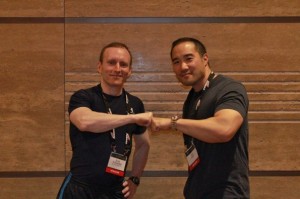
Any benefit to consuming one type of protein over another (i.e. whey vs. casein)?
In the larger picture, the answer for the most part is no. Assuming that someone is consuming sufficient total daily protein from a variety of high-quality sources, then their bases will be covered, regardless of differences in protein type. Short-term data indicates the superior effects of whey (compared to casein or soy) on MPS at both the resting & postexercise periods. It’s been speculated that this is due to the greater overall rise in circulating amino acid (particularly leucine) levels yielded by whey. However, studies that dragged this type of comparison out for several weeks have shown equivocal outcomes. Whey, as opposed to casein or soy, has not emerged as the dominant winner for improving muscular adaptations to training. This serves to reinforce the principles that a) total daily amount of high-quality protein is of prime importance, b) differences seen shortly postexercise will not automatically translate to long-term adaptations, and c) the body of evidence is subject to evolve.
How important is macronutrient ratio with respect to weight loss?
People have varying total energy demands, and this can differently influence their macronutrient requirements. Ratios per se shouldn’t be the focus since they’re merely a default result of figuring absolute needs. For example, those with a moderate to high energy output (through formal training, non-exercise activity, or both), can typically consume a higher amount of carbohydrate and still lose weight. In contrast, sedentary or barely active folks have lower overall energy demands, thus a high carbohydrate intake wouldn’t likely be optimal. Nevertheless, there’s rather interesting, yet unreplicated research examining the effects of insulin sensitivity on weight loss (low-carb worked better for insulin-resistant subjects while high-carb worked better for insulin-sensitive subjects). Unfortunately, body composition wasn’t assessed, nor was there any structured exercise protocol. My hunch is that a well-designed, progressive training program would greatly diminish the influence of pre-existent differences in insulin sensitivity on weight loss.
Are you a proponent of cutting carbs for someone who wants to get really lean?
For losing fat past the initial stages, I’m a proponent of imposing a calorie deficit, and depending on the individual situation, this can involve a decrease in caloric intake, an increase in caloric output, or a combination of both. In the case of intake reduction, it doesn’t make sense to hack into critical nutrients – especially protein, whose requirement actually increases in a caloric deficit. So, for the most part, it’s carbs that will get the brunt of the reduction when it’s time to cut calories, while protein & fat remain somewhat stable (I typically set protein slightly higher than it needs to be). The degree of carb reduction varies individually, but the underlying aim is to consume the highest amount of carbs that still allow a satisfactory rate of fat loss. This approach accomplishes two main things – it enables the highest possible training performance (in terms of both strength & endurance), and also the lowest chance of undue hormonal downregulation from prolonged bouts of dieting. Carb reduction can then be strategically positioned as a trump card. In other words, carbs can always be incrementally reduced on an as-needed basis, depending on how results are proceeding. Starting off with minimal carbs from the get-go leaves fewer options in the toolbox to break through progress plateaus once training volume is maxed-out.
Intermittent fasting has gained popularity recently. What are your thoughts? Panacea or fad?
I think the popularity of intermittent fasting (IF) is, for the most part, a good vindication of science. Academics have known for a while now that research has not supported the lore of frequent, small meals to stoke the metabolism better than the equivalent in larger, fewer meals. Furthermore, research has not supported the idea that small, frequent meals are necessary for preserving muscle mass. The evidence as a whole has not indicated any threat to muscle preservation during dieting when meal frequency is reduced – either daily or intermittently through the week. In fact, some studies have shown superior lean mass retention with IF during hypocaloric conditions. However, this could have been due to measurement error inherent with bioelectrical impedance analysis. It should also be noted that the IF research thus far has not involved structured exercise protocols.
At the same time that IF has vindicated science, it also created its own over-zealous following who preaches its universal necessity for optimizing body composition and health. Viewed more objectively, IF presents an effective option for those who prefer the convenience and luxury of larger meals – not to mention, less preparation & transportation of meals through the day. Any special or superior metabolic effects of IF compared to conventional meal patterns are speculative at this point. While IF has consistently shined in the department of lean mass retention while dieting, its comparison to conventional meal frequency on gains in muscular strength & hypertrophy is uncharted ground, at least in formal research. There are plenty of hypotheses flying around this area, but nothing demonstrated under controlled conditions. For the time being, meal frequency for optimal size & strength gain remains mysterious. This mystery is likely to begin unfolding with short-term data that one camp will excitedly embrace. If history means anything, the acute data will be followed by long-term data that shakes the confidence in former beliefs. Either way it goes, I’ve got my popcorn ready.
On a final note, I’ve seen the greatest client success come from letting individual preference dictate meal frequency. Some people do great on small frequent meals, others do great on the opposite (and all points in between). The theoretical advantages of any given dietary approach go straight out the window if it’s at odds with someone’s personal preference & adherence capability.
Tell us a little about your research review and how you came to start the service.
In a nutshell, my research review (AARR) is a monthly romp through the current and past research on nutrition, training, and supplementation. I do my best to present both the theory and application of the concepts and findings. The idea to start AARR was born from my own dissatisfaction with my knowledge level despite having vast client experience, multiple training certifications, a graduate degree in nutrition, and being active in attending & presenting continuing education lectures. I felt like there had to be some way to further “force” myself toward the top tier of expertise. Putting AARR together each month was the logical solution for my self-directed learning tendencies. I’m now enjoying the process of sharing my ongoing enlightenment with like-minded folks inside and outside of the field.
Great stuff, Alan. Really appreciate you taking the time to share your views!
Check out Alan’s blog Here
Check out Alan’s excellent research review (AARR) Here
August 25, 2012
This and That…
1) Happy to say that I’m entering the final year of my PhD program at Rocky Mountain University. So far it’s been an extremely rewarding experience. Sure, the coursework has been a bit overwhelming at times, but I’ve become a much more astute fitness professional as a result–particularly in my ability to assess and scrutinize research. Very much looking forward to carrying out my dissertational research and furthering our understanding about the mechanisms of muscle hypertrophy and their application to resistance training.
2) I recently collaborated with my good friend Bret Contreras on another T-Nation article, this one focusing on the Weider Principles. In case you don’t know, the Weider Principles are a set of exercise guidelines compiled by Joe Weider, who built a fitness empire that includes many of the popular fitness magazines and bodybuilding contests. Joe has been maligned by many in the field (and in some cases rightly so) for perpetrating a variety of exercise and nutritional myths. But Joe was a visionary and in our article, 6 Lessons Learned from the Master Blaster we objectively delve into recent research that has validated a number of Joe’s principles and provide recommendations for practical application of the relevant principles.
3) Speaking of Bret Contreras, he has teamed up with physical therapist Jonathan Fass for a new podcast venture called, The Strength of Evidence. It’s a really great listen filled with top-notch info from two really smart guys.
4) Here is a video clip from my lecture at the recent Fitness Education Institute conference in New York City. In this clip, I discuss the importance of adopting an evidence-based approach to training. Many people have a misconception as to what “evidence-based practice” really entails, and here I clarify its meaning and discuss why it is so vital to optimal fitness results.
embedded by Embedded Video
5) My new book, The MAX Muscle Plan is set to be released next month. The book details a six month periodized routine designed to maximize muscle development, providing both the scientific basis of how muscles grow as well as detailing every exercise, set and rep of the program. I’m really pumped (no pun intended!) for its release. Much more on this over the coming weeks.
That’s all for now…
Brad
July 23, 2012
Strategies to Maximize Muscle Strength and Size

Here is a link to a recent article I wrote for T-Nation titled, Demolish Your Genetic Limits. The article details 5 strategies that I’ve successfully used to help experienced lifters enhance muscle strength and size, all backed by solid research. They’re particularly effective for those who have hit a plateau in their training efforts. Enjoy!
Brad
July 17, 2012
Reflections from the NSCA National Conference 2012

There are two things I really enjoy about going to fitness conferences. First is the opportunity to attend presentations and learn cutting-edge info from those in the field whom I respect and admire. And second is to meet up with other fitness pros in a conversational environment and discuss topics of interest. There is no better venue to accomplish these dual objectives than an NSCA event–particularly the NSCA National Conference. Presenters are consistently the top guys in the field and the NSCA membership is as dedicated and knowledgeable about fitness as any you will find. The 2012 NSCA National Conference, held at the Rhode Island Convention Center in Providence from Wednesday July 11th to Saturday the 14th, did not disappoint!
Given my involvement with the NSCA (I had several meetings as well as two lectures to present) I unfortunately was unable to attend several presentations that I’d really looked forward to seeing. These included talks by Eric Cressey, Lou Schuler, Nick Winkelman, JC Santana, Jay Dawes, and others. That said, I did manage to find the time to catch a few select talks. Here’s a brief overview of these seminars:
1) Dr. Bill Kraemer: For those of you who do not know, Dr. Kraemer is the pre-eminent researcher in strength and conditioning. He’s probably published more peer-reviewed papers on the topic than anyone in history and serves as the editor-in-chief of the Journal of Strength and Conditioning Research. He’s been a mentor to me and I have the utmost respect for his accomplishments. Dr. Kraemer lectured on concurrent training which, simply stated, is the performance of both resistance exercise and aerobic training during a given time period. His lecture highlighted research on the topic showing an incompatibility between the two. The technical detail was well balanced with practical application. Interestingly, Dr. Kraemer pointed out that research shows that running has a significantly greater negative effect on strength and hypertrophy compared to cycling. “Exercise antagonism” was discussed, where the anabolic stimulus of resistance training is countered by the catabolic effects of aerobics. Dr. Kraemer proposed that this incompatibility can be minimized by careful periodization that allows sufficient rest and recovery. Lots of great take-home info.
2) Dr. Michael Roberts: I was not familiar with Dr. Roberts until this conference, but came away very impressed with his knowledge and professionalism. His topic delved into the effects of physical activity on disease prevention. Dr. Roberts presented research from his lab showing that when rodents were kept sedentary (their lab uses a cool device that locks the running wheel so the rats cannot run), they rapidly develop all sorts of cardiovascular and metabolic complications. Dr. Roberts showed correlative evidence that this occurs in humans, too. His take home message was to get at least 10,000 steps a day. He pointed out that modern hunter-gatherer populations accumulate twice this amount and have almost no lifestyle-related disease. A powerful presentation! Made me want to get a pedometer 🙂
3) Dr. Jacob Wilson: Dr. Wilson is a friend and colleague. He is quickly becoming one of the most respected researchers in muscle hypertrophy and supplementation. His presentation was on the supplement HMB–a metabolite of the amino acid leucine–and its effects on strength and body composition. Coming into the lecture, I had been skeptical of the supplement based on the limited data that I’d seen. Jake gave me reason to reconsider my position. He presented research, mostly from his lab, showing that HMB can promote significant and meaningful increases in muscle and strength. He pointed out that many of the studies not showing effects for HMB were due to the use of low-intensity training protocols. His presentation was smooth and systematic. One of my main issues with many of the amino acid-based supplements is that protein intake is generally not controlled. Jake stated that his lab carefully equated protein consumption amongst subjects at 25% of total calories. This makes a strong case that the data should be taken seriously.
4) Dr. Mark Peterson: Dr. Peterson has already established himself as one of the leading researchers in sarcopenia (i.e. the age-related loss of muscle) and obesity with publications in many of the top journals. He also serves on my doctoral dissertation committee, so as you can imagine I hold him in very high regard. This lecture focused on the obesity epidemic and the potential application of resistance training as a remedy. There was a great deal of high level info as well as some good humor interspersed in between (always good to have some levity in a high-level discussion). Mark debunked the claim that muscle significantly elevates resting metabolic rate (by his calclulation, the amount equates to about 5 calories for each pound of muscle). That said, he pointed to the fact that resistance training substantially increases in energy expenditure following exercise (i.e. EPOC) as a primary reason why lifting weights can have a major impact on weight management. There also is good evidence that resistance exercise improves various meatoblic and cardiovascular markers (i.e. glucose tolerance, lipid profile, etc) even in the absence of weight loss. The take home message was that lifting weights was particularly important for the obese and can be one of the keys to improving health and wellness in this population, but that optimal results are best achieved by combining such training with regular aerobic exercise.
As an aside, this event had special meaning for me. The highlight came at around 2:45 pm on Friday afternoon–15 minutes before I was scheduled to speak on Metabolic Resistance Training–when I was informed that I’d been elected to the NSCA Board of Directors. The NSCA is the world’s leading authority on strength and conditioning and I’m humbled and honored to be involved in shaping its future direction. A heartfelt thanks to all of you that supported my candidacy. Know that I will work diligently to further the NSCA’s mission, which is to bridge the gap between exercise science and application. I am particularly focused on elevating knowledge in the field of personal training, and hope to expand the growth of the NSCA in this area. Very excited to take on the challenge!
Cheers!
Brad
June 26, 2012
Speaking Engagement
Just a reminder that I’ll be speaking at FEI Eclipse Conference this Friday, June 29th. The topic is one of my favorites: Facts and Fallacies of Fitness. Here I’ll debunk many of the popular myths and misconceptions about exercise and nutrition that continue to be erroneously promoted as fact. The event is being held at the Hilton Double Tree Hotel in the heart of Times Square. Hope to see you there!
Brad
June 21, 2012
Where are the posts?
Yes, I know I need to be more diligent with posting to the blog! Sorry to those who have emailed me about the lack of activity. Thoughtful posts require a lot of time and and I don’t want to just dash off something for the sake of putting out content. I hope to increase the frequency of posts as the summer wears on and my schedule clears a bit.
In the meantime, I wanted to remind everyone that the NSCA National Conference, taking place in Providence, RI, is less than a month away! I’ll be giving two lectures at the event. First, a 2-hour precon on Wednesday, July 11th titled “Scientific Muscle: A Periodized Approach to Maximizing Muscle Development.” If you want to maximize your muscle development or want to learn how to program routines to help others do so, this is one you don’t want to miss as I’ll delve deep into the how science can be blended with art to customize a routine for optimal growth. In addition, ’ll be doing a general session on Friday, July 13th titled “Metabolic Resistance Training.” This lecture focuses on how to structure your lifting routine to optimize fat loss while maintaining lean muscle. Here is the link to register for the conference. Hope you can join me there!
Also wanted to once again state that I am running for a seat on the board of directors at the NSCA. I consider the NSCA to be the world’s elite certifying fitness organization, and I am deeply committed to their mission which is to, “…support and disseminate research-based knowledge and its practical application, to improve athletic performance and fitness.” If elected, I will work diligently to further this mission and promote the importance of evidence-based practice. That’s a promise. If you are an NSCA member, I would greatly appreciate your vote. You can vote at the following link: NSCA Board of Directors. If you don’t have your password, just give the NSCA a call at 800-815-6826. Many thanks in advance!
Brad
May 10, 2012
Random Thoughts and Musings
It’s been a while since I’ve posted some thoughts and musings, so here they are in no particular order…
That’s it for now. Until next time…
Brad
May 3, 2012
Stiff-Legged Deadlift Performance: Facts and Fallacies
The stiff-legged deadlift (a.k.a. straight-legged deadlift) is one of the most popular resistance exercises for developing the glutes and hamstrings. Unfortunately, it’s also one of the most misunderstood. Many lifters have misguided notions about the risks of the movement. Others simply have the wrong idea as to how it should be performed. Here’s a primer on what you should know.
There’s a misconception that the stiff-legged deadlift is dangerous to the knee joint. You’ll hear people say that you should never perform a movement that requires locking out your knees. Nonsense. To understand why, a little applied anatomy is in order. Although people tend to think of the knee joint (i.e. tibiofemoral joint) as a hinge joint, this is only partially true. In actuality, it’s a modified hinge joint (in geek speak, it’s technically classified as a trochoginglymus joint) given that a small amount of internal and external rotation takes place during flexion/extension. Specifically, when the knee begins to flex from a fully extended position, the tibia internally rotates to “unlock” the joint. During extension, the tibia then externally rotates to “screw home” so that the knee can fully lock out. This mechanism is necessary to achieve proper alignment of the tibial and femoral condyles. And herein lies the rub. Knee flexion is associated with rotation while there is no appreciable rotation of the knee during extension. Given that increased mobility results in decreased stability, which do you think is the more stable position? Full extension, of course. This is supported by in vivo (i.e. in the living) human research which shows that that anterior/posterior laxity of the knee is greatest at 20 degrees and tightest at lock out (Markolf et al. 1978). Bottom line: There is no detriment to locking out the knees when performing the stiff-legged deadlift.
There actually is a potential benefit to keeping the legs straight. You see, the hamstrings are a biarticular muscle, meaning they span two joints: the hip and the knee. By keeping the knees straight, the hamstrings remain in a fully lengthened position. Why is this important? Well, studies show that muscle force is optimized when a two-joint muscle is stretched at one end while acted upon at the other. This seems to be particularly important to an element called titin, which has been shown to act as a mechano-sensor for anabolic signaling. Thus, if your goal is to maximize hamstrings development, the straight-legged version will tend to heighten activity in this musculature. As an aside, there is reason why you generally shouldn’t lock the knees during performance of multi-joint lower body exercises like the squat as this diminishes constant muscular tension, but this is a topic for a different day.
Another issue with the stiff legged deadlift involves performance. Namely, I all-too-often see lifters get up onto an elevated platform or box so they can stretch down to the floor. Unfortunately, this extra range of motion generally occurs by flexing the spine. Problem is, this can place an extreme amount of undue stress on the discs, potentially leading to injury. Realize that the stiff-legged deadlift is a hip extension movement designed to target the glutes and hamstrings. Hopefully you know that the glutes and hams do not attach to the spine, so spinal movement will have zero effect on activation of these muscles! Bottom line: Bend only as far as your hips will allow. In most people, this generally means you won’t lower the bar much past your knees. You’ll feel an intense stretch in the hamstrings and this will be the limiting aspect to how far down you can go.
As far as performance, here are a few important cueing tips. First, always maintain a neutral lumbar/thoracic spine. To facilitate this posture, keep your head up throughout the move. I encourage lifters to see themselves in the mirror at all times (a tip I learned from the late, great Mel Siff). As soon as your head drops, your spine will reflexively tend to round. I’ve heard some coaches say that keeping the neck slightly hyperextended is problematic, but there is no evidence this is the case. In almost two decades of training clients, I’ve never had anyone complain of neck pain and, most importantly, no one has ever injured their lower back during performance. Second, try to push your butt backward as you descend. This will maximize activation of the hip extensors. Finally, actively squeeze your glutes at the top of the movement. The idea is to generate a powerful contraction that maximizes muscle activation in this position.
Here is a video explaining performance of the exercise. Enjoy!
embedded by Embedded Video
Reference
Markolf KL, Graff-Radford A, Amstutz HC. In vivo knee stability. A quantitative assessment using an instrumented clinical testing apparatus. J Bone Joint Surg Am. 1978 Jul;60(5):664-74.
April 27, 2012
An Interview with Nick Tumminello
Nick Tumminello is not only an excellent trainer, he’s one of the real good guys in the fitness field. But what really impresses me about Nick – in addition to his innovative approach to training – is that he’s never afraid to speak his mind and challenge accepted dogma on a given fitness-related topic. You may remember that I interviewed Nick here a little over a year ago. Well, Nick has just come out with a new DVD on single leg training and it just so happens he has some interesting things to say on this subject and a few others. So without further ado, here’s the uncensored interview:
BJS: Musclemag recently featured you for your work with bodybuilders in this awesome 7 page spread. Congrats! How did this come about?
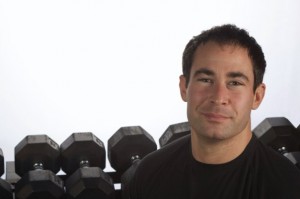
NT: I’m always grateful that I get to write articles for major fitness magazines. But, to have a major magazine do an article about me… man is that a huge professional honor! Especially in MuscleMag, which has been of one my favorite magazines since being teenager who was into lifting and trying to “get swole” 🙂
The article feature came about because I’ve been writing articles for several of the RKP magazines: Oxygen, Maximum Fitness, REPS! and MuscleMag. The editors of MuscleMag know me as a guy who’s always full of scientifically-inspired and athlete-approved ways to upgrade classic bodybuilding exercises. And, they are always interested in providing their readers with new ways to improve their workouts and bring about new muscle. So, when they decided they were going to start doing features of trainers, they contacted me to be the first. I’m so humbled that I was the very first name they thought of for this project.
MuscleMag filmed and photographed an extended training session I did with my friend and bodybuilder Fello Cambronero, who just won the OVERALL at the Sr. y Sra. musculo competition in Costa Rica. When it was all said and done, the editors liked the content so much they turned it into a BIG 7-page feature. I shared the excitment with Fello (Alex) Cambronero when the article was published because it was his first ever appreacnce in a major bodybuilding mag as a featured model. High five goes out to Alex and his lovely wife Maggy!
BJS: What’s your approach when working with bodybuilders? Specifically, do you use a mix of machines and free weights or do you prefer one versus the other. What about rep ranges?
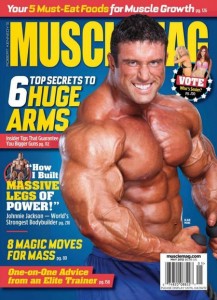
NT: My approach with bodybuilders is to increase Hypertrophy, DUH! 🙂 That said, I still take a hybrid training approach with them. In that I incorporate mobility work, some 3D movements and even some athletic type drills into thier warm ups.
I absolutely use BOTH free weight and machines as they both have unique benefits the other doesn’t. Machines are actually a very consistent component in almost ALL of the bodybuilding workout programs I design because they allow for a constant tension on the muscles being worked, due to the Cam design of a machine. You don’t get that with free weights because they’re purely gravity dependant.
Just think about a Biceps curl with dumbbells; you get no resistance at the bottom (when your elbow is straight), and you don’t get much resistance at the top of the curl either because the lever arm is very short. Is that a bad thing?, NO! But, when doing biceps curls on machine, we can hit those angles gravity (i.e. free weights) wouldn’t allow.
This is why I don’t get caught up in these typical arguments over which is better, free weights or machines? We just do both because they both have benefits. And, we’ve found using them together get us results even faster because our workouts are more comprehensive.
For sets and reps: We use a variety of schemes. We’ll do basic 3-4 sets of 8-15 reps. We’ll do 4-6 sets of 4-6 reps. We love to alternate between those two basic rep schemes.
We’ll also use a wide variety of traditional and not so traditional overload concepts, such as: rest pauses, drop-sets, 21’s, 1.5 reps, etc. Along with many Performance U Hybrid Strength Training innovations such as 747s, Complexes, Triple Threat Protocols, 54321 workouts, etc.
BJS: Do you periodize bodybuilding routines or is it more intuitive?
NT: I always have some sort of plan. But, my “plans” are a moving target in that I’ll change something up a bit if needed.
One of my favorite, go-to bodybuilding program design strategies is to design a 6-week block program. In that 6-weeks your first (primary) exercise is alternated between two moves. The rest of the exercise in that workout stay the same for six weeks. But, the reps are undulated each workout. So, you have higher reps days, lower reps days, etc.
In short; We alternate and undulate! That’s my little saying, so I’ll know if anyone steals it 🙂
BJS: I know you have a new DVD on single leg training that was just released. What are the benefits of performing single limb exercise for the lower body?
![]()
NT: First, I’d like to say that just because I came out with a Single Leg Training DVD doesn’t mean I’m against double leg training. At Performance U, we use BOTH bilateral and unilateral lower-body training. This another situation where we don’t bother wasting our time arguing which is better because they both work!
When coaches and trainers stop being so concerned with being right over thier peers in these debates, and become more concerned with finding what right for thier clients in thier training, we’ll all be better off.
Anyway talk to most trainers about single leg training and they’ll likely show you pistol squats, single leg RDLs and Bulgarian split squats. Or, a small variations of those same basic movements. Those are great exercises, but they don’t even scratch the surface of what we’ve been able to do with our hybrid single leg training concepts and techniques. In other words, pistol squats, single leg RDLs and Bulgarian split squats are the checkers. But if you’re ready to play chess, get the Secrets of Single Leg DVD.
There are several benefits of single leg training that we’ve found:
Better balance: This one is obvious
Less Chance of Sports Injury – We hear lots about asymmetries and injury potential. But, the research I’ve seen says injury potential is more about strength asymmetries than anything else. In that, when you don’t control one side of your body as well as they other, you may be at a higher injury risk. Research shows us that you can still move a bit differently on each side (i.e. have a movement asymmetry), just as long as you can control the movement you can create on either side.
Better Body Control and Strength – By following the SAID principle (i.e. Specific Adaptations to Imposed Demands), if you want to make sure you’re strong and able to control each side of your body, you train each side of your body independently to ensure BOTH side can do what they need to.
Improved Muscle Symmetry – Not only will have better strength/control on both sides potentially help you minimize injury. It can help you look better and build a more symmetrical looking lower-body.
Improved Sports Performance – Sports require stops, starts, direction changes and raising and lowering your center of mass. And, most of the time these action are done from a split, unilateral type stance where one leg is positioned to do more work than the other. We’ve found Single leg training can help ensure that both legs can get the job done, regardless of the position you’re in!
Less risk of hurting yourself in the gym – A high percentage of humans have a leg length asymmetry, which would make double leg training more risky because your body is having to deal with torque (from the leg length issue) along with the compression from the load you’re lifting when squatting or deadlifting. Single leg work allows us to not worry as much about this issue potentially hurting our clients and athletes. Plus, it gives us more capacity to use heavy double leg training when we feel it appropriate.
BJS: If you could pick one single leg exercise that provides maximal benefits for muscle development, what would it be?
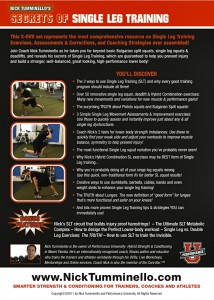
NT: When speaking purely about muscle development (for bodybuilding) purposes, I’d say the knee tap squat. It’s basically a single leg version of a front squat, with a bit more hip hinge to bring in more glutes and hams. It’s the exercise pictured in the middle images of the back of the DVD cover (see the image to the left).
BJS: You state that the pistol squat might not be a good exercise. Why?
NT: Here’s what I wrote for Laree Draper about this, which she posted here;
Although the pistol squat is a trendy, cool looking and old-time exercise, it’s not something we use with our clients and athletes at Performance U.
We don’t feel the pistol squat exercise is “bad”, nor do we feel it’s dangerous. And, we don’t get caught up arguing against Pistols, or will we try to convince anyone to stop doing them. All we can do is share the training methodologies that make the most sense to us, along with the exercise applications we’ve found to work best for us.
That said, in our training with individuals of all levels from pro athletes to active seniors, we haven’t found the body positions and force production patterns involved in the pistol squat exercise to have as much value and functional carryover as some of the other creative, hybrid single leg squat variations we use, which I’ve displayed in the Secrets of Single Leg Training 2-DVD set.
You can see more about why we don’t use the pistol squat in this video
embedded by Embedded Video
Sure the pistol squat can make you stronger! It’s also very challenging exercise. And, if you enjoy doing them, then great! But, we’ve found other single leg squat training options, which we’ve found to be more beneficial because they more accurately match the body postures we see in sports and daily living; and they more closely replicate the force production patterns we are looking to improve with the clients and athlete we train.
BJS: Many thanks for sharing your thoughts Nick!
You can check out Nick’s Blog at: NickTumminello.com
Here’s the link to check out Nick’s Secrets of Single Training DVD




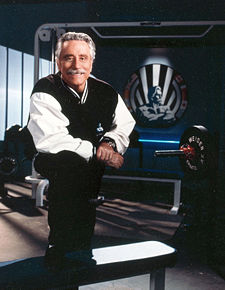


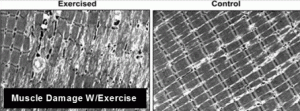

 Entries (RSS)
Entries (RSS)



